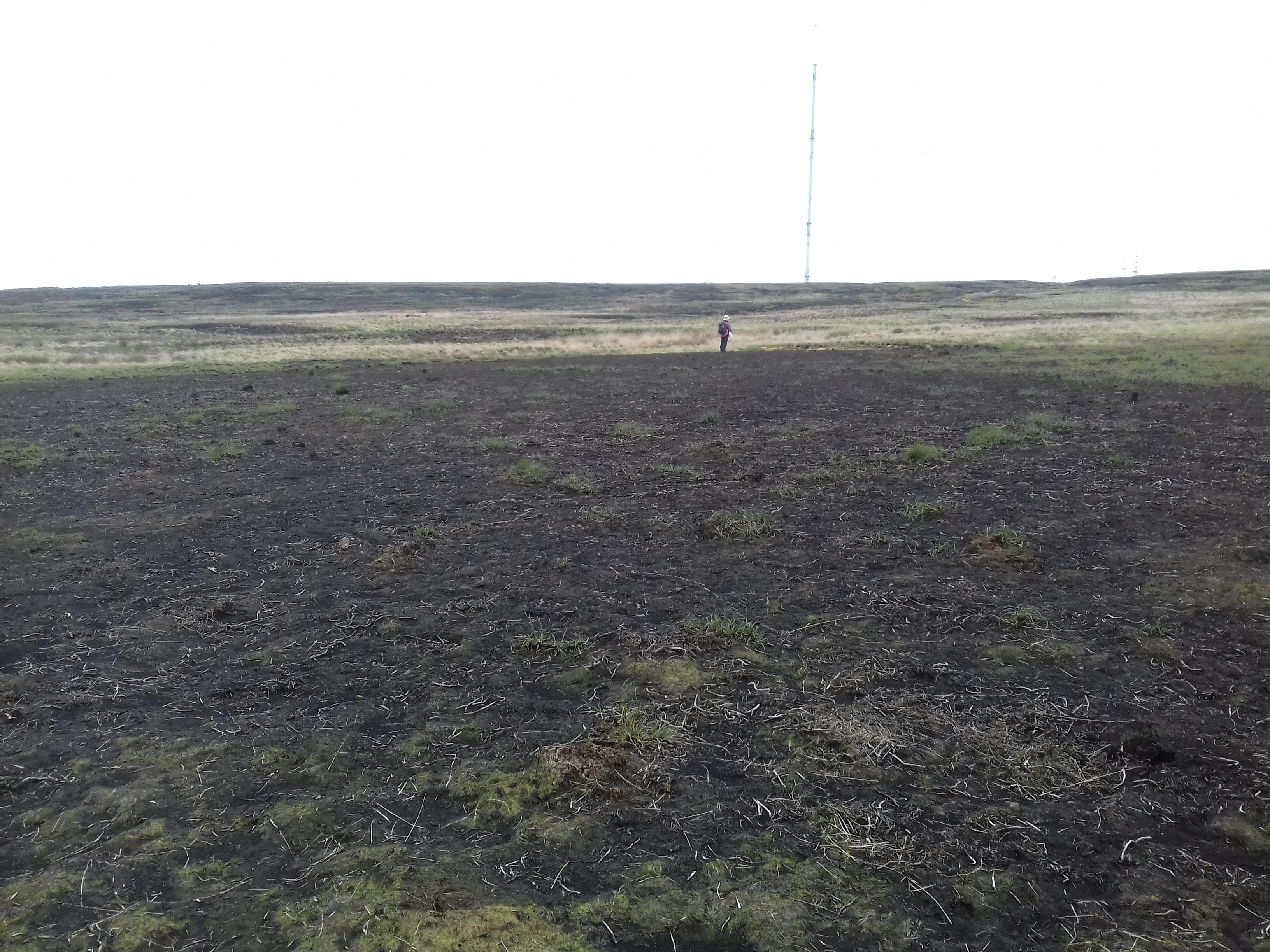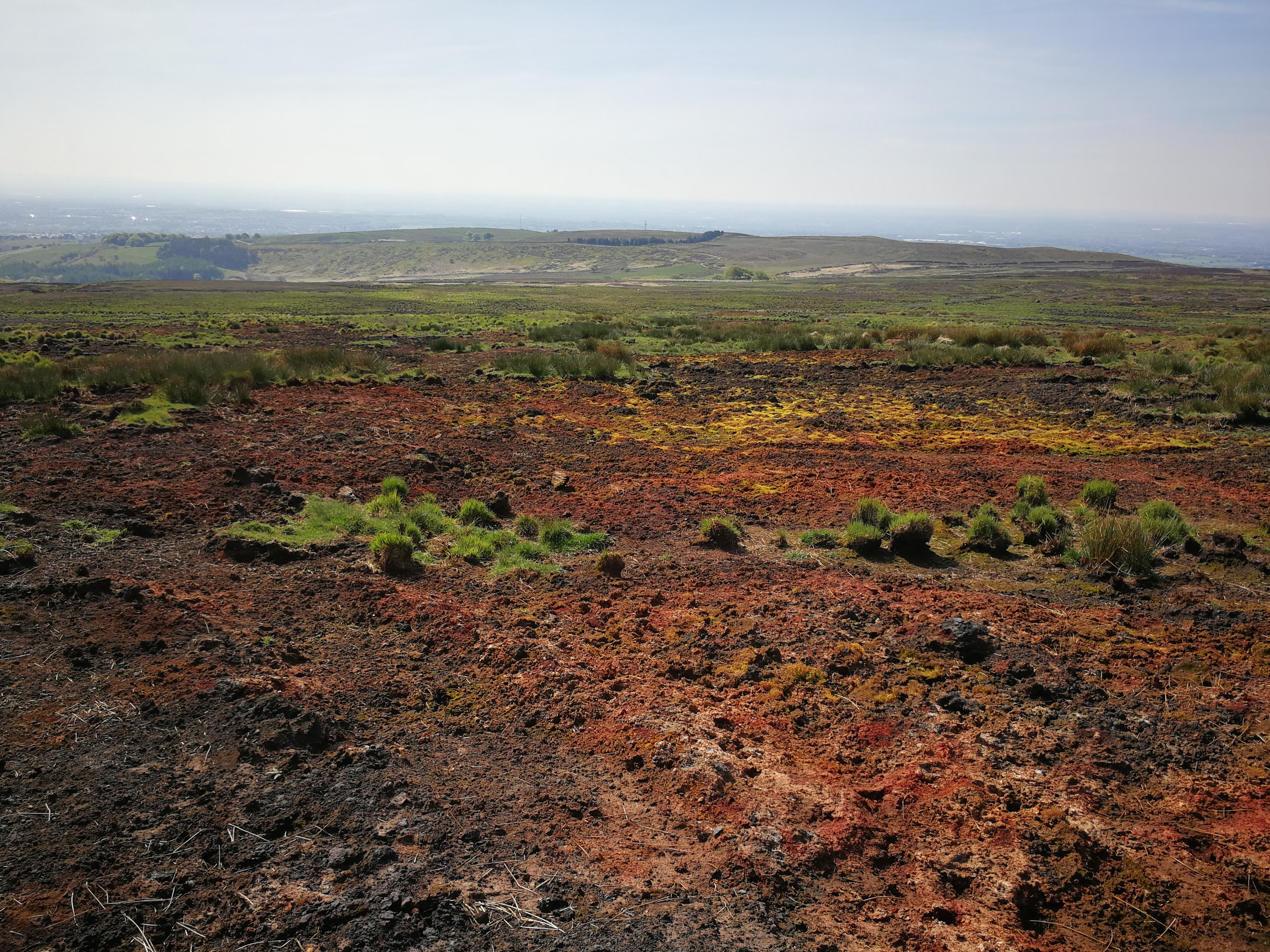Defra have funded over £600k, as part of the Moor Carbon project that will look to breathe new life into precious peat and moorlands near Bolton, which were ravaged by wildfire. One third of the Woodland Trust owned Smithills Estate, which encompasses the iconic Winter Hill Transmitter, was badly damaged by fires that swept through in 2018. A year later, signs of new life were seen as the snow-like cotton grass sprang up across the landscape, but the damage to the carbon-rich peat beneath will take decades to repair.

The wildfires that scorched the landscape in 2018 left areas of blackened, bare, and carbon-rich peat. Without plants to protect the peat from erosion, the exposed peat is extremely vulnerable. Peat degradation is leading to the loss of carbon from areas where peat is bare, the Moor Carbon project aims to halt the loss of this carbon by restoring areas of bare peat across the South Pennines and Peak District moors.
We need blanket bogs to be in good condition because they provide essential life-support for humans and animals alike. They trap carbon in the ground helping to fight climate change, they reduce the risk of wildfire, improve water quality, provide natural flood management, and are home to rare and wonderful plants and animals.
Funded by Defra as part of the Peatland Restoration Fund, the Moor Carbon project aims to reduce UK carbon emissions through the restoration of blanket bog in line with the 25 Year Environment Plan. The scorched ‘moonscape’ at Bolton, is one of the areas that will be benefiting from peatland restoration work under this project, that will be carried out by Moors for the Future Partnership [the Partnership].
The Partnership has been restoring the degraded blanket bogs of the Peak District and South Pennines for nearly 20 years. Its experience and expertise ideally positions it to be part of the nation’s post-coronavirus ‘green recovery’, as it continues to protect our life-supporting peatlands. In recognition of this, Defra have awarded an additional £652,000 in 2020 towards its Moor Carbon project. This additional funding will help the Partnership to deliver more peatland restoration work across the South Pennine and Peak District moors under the Moor Carbon project. The Government’s 25 Year Environment Plan outlines the UK’s need to tackle the climate emergency and offer environmental protection on an unprecedented scale. The positive results from its restoration work has placed Moors for the Future Partnership in an ideal position to be part of the post-coronavirus ‘green recovery’ and this additional funding will help the Partnership to do more.

To restore the peatlands home to the Winter Hill transmitter, a mixture of techniques will be involved, including lowering the acidity of the moorland soil to promote natural regrowth of specialist moorland plants and planting sphagnum moss – the most important aspect of any bog habitat. There will also be blocking of drainage channels to make the moors wet again, helping to stop carbon-rich peat being carried off the hills by rainwater into streams and reservoirs and carbon being released in the process.
The restoration work is underway and will continue to March 2021.
Tracey Garrett, who heads up the Trust’s Smithills team said:
“Here at Smithills we have a precious landscape in terms of the region’s battle against climate change. It is unique in that it is home to a variety of important habitats – from peatlands and moorlands to upland grasslands and woodland.
“Two years ago the fire damaged a third of the site and its effect on the area and its wildlife was unprecedented, leaving what resembled what can only be described as a moonscape. Whilst there has been some recovery the damage caused will take decades to recover.
“This new restoration project will reduce this recovery time by focusing on aiding recovery of the peatlands through both lowering the acidity of the soil to promoting growth and through replanting. A healthy, living, breathing peatland is one of the most effective habitats for soaking up harmful carbon.”
Matt Scott-Campbell, Conservation Programme Manager at Moors for the Future Partnership said:
‘Peatlands have a vital part to play in tackling climate change, storing more carbon than any other terrestrial habitat type. Rather than being a natural carbon store, peatlands, when in a degraded and damaged state are a major source of carbon emissions both in the UK and globally. This accounts for their prominent position in Defra’s 25 Year Environment Plan, and why it is vital to urgently reverse the damage to our peatland habitats as part of tackling climate change. The Moor Carbon project focusses on prioritising the carbon capture potential of the Peak District and South Pennine moors, which are some of the most degraded uplands in Europe.
Alongside a legacy of industrial pollution, wildfires like the one that swept through Smithills in 2018 and devastated the habitats there, are a major source of the degradation to our local peatlands. On top of the initial release of carbon, the land is left vulnerable to ongoing carbon losses from the damaged peat surface. Bolton is just one of the sites that we will be addressing with the funds allocated for the Moor Carbon project, delivering on a landscape scale, with a lasting legacy of ecosystem service benefits.’
Moor Carbon project details.